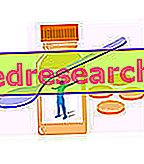Edited by Alessandro Cioffi
One of the fundamental aspects of the work of a Personal Trainer is to correctly learn a motor gesture. Therefore demonstrating an exercise to the client, and then inviting him to reproduce this exercise, is a fundamental process, which creates the best basis for capturing and learning movement to perfection.

But let's get some clarity.
In the early 1990s, a team of researchers led by Giacomo Rizzolatti and composed by Vittorio Gallese, Leonardo Fogassi and Luciano Fadiga, discovered a special class of neurons in the macemot Nemestrino, at the level of the F5 area in the premotor cortex, which were activated both during the execution of a task (or an action), and at the sight of the same task performed by another subject. The discovery was a real case of serendipity, therefore a mixture of luck and chance.
Due to their peculiarity of reflecting the actions seen as if they were mirrored, they were given the name of " mirror neurons ".
Due to the ethical impossibility of carrying out studies with internal microelectrodes in humans, various new diagnostic methods were used, thanks above all to Marco Iacoboni, which would have been fundamental to sanction the presence of this class in our species.
The main uncovered mirror areas are:
the anterior rostral portion of the inferior parietal lobe
the lower sector of the precentral gyrus
the posterior sector of the inferior frontal gyrus as well as the anterior sector
the dorsal premotor cortex.
Mirror neurons are implicated not only in imitative learning, but also in the understanding of actions, allowing however to anticipate the outcome, and in the understanding of emotions, a mechanism that allows us to empathize with other individuals.
Referring here exclusively to imitation learning, we take a general look at the concept of learning.
Learning, to put it briefly, is the acquisition of a "technique" that can then be re-proposed in the future; specifically motor learning is the acquisition of a new pattern (model) that includes both an action, a behavior, and an expression.
Motor learning always includes three stages: raw coordination, fine coordination, autonomous or variable availability. Mirror neurons undoubtedly play a fundamental role in the first stage, and with repetition we will pass on to the other two stages.
| Raw coordination - | Fine coordination - | Variable availability |
It includes the learning process that goes from understanding the task of movement to the stage of raw coordination (the student, in favorable conditions, is able to perform the movement). | It goes from the co-ordination stage up to the coordination stage where the student is able to perform the new movement adhering to the technical model, almost without errors, so it already achieves good performance. | - It goes from when you reach the stage of fine coordination at the time of variable availability, the state of "mastery". The athlete is able to use the movement effectively, even in difficult and unusual conditions. |
The concept of imitation can be interpreted in two ways: the first refers to the ability of an individual to replicate an act, belonging to his motor repertoire, after having observed it from others; the second presupposes that an individual, observing an act of others, learns that new pattern of action, coming to do it, through repetition, in an ever more detailed way.
Imitation, therefore, presents itself as essential for motor learning.
In practice, mirror neurons in the observation of a motor act not present in our repertoire are activated by breaking up the observed act into several fragments.
Each fragment corresponds to a movement already stored, whether it is transitive or not, and through the collaboration of other frontal areas, all these frames are reassembled to allow then the reproduction of the motor gesture, defining a new motor pattern. It is evident that the attentional processes are very important during the vision of the motor act.
Based on this a good PT will be able to follow the guidelines whenever he finds himself having to learn a new exercise for his client.
Here I will refer almost exclusively to the basic motor exercises, or even multiarticular exercises due to the involvement of several joints, which - also based on the nature of the mirror neurons to activate more for complex motor actions and not for single muscular movements - are to be preferred in most cases; moreover, they are indispensable for almost all the objectives sought by the various subjects (muscular hypertrophy, development of maximum strength, weight loss, functional training, etc.).
In these exercises you will certainly be included: various types of Squats, various types of deadlifts, various types of lunges, Lat machines or traction at the bar, flat bench with barbell or dumbbells, thrusts upwards with dumbbells or military press, flat bench, narrow grip or dip to the parallels, Sit Up and others.
First of all, it seems obvious how a good PT must have learned the perfect execution of each exercise over the years, in order to propose it again in the most correct way possible for the client who is in a position to learn a new motor gesture. Let us remember, in fact, that for the customer this motor gesture could never have been seen before, or at least the worst ever been done, and to make sure that in the future you master it to the maximum you will need to give a correct input right from first session.
Keep it going "



